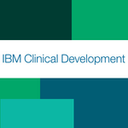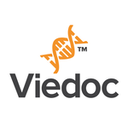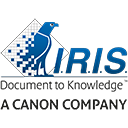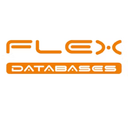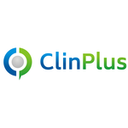Electronic Data Capture software: purchase guide
Electronic Data Capture Software in 2025: Reliable Data, Smarter Research, Faster Decisions
What Is Electronic Data Capture Software
Electronic Data Capture (EDC) software is the digital foundation for collecting and managing structured data in research and clinical environments. It replaces traditional paper-based forms with secure, cloud-based platforms that streamline how studies are conducted and monitored. In practice, EDC allows researchers to collect, validate, store, and analyze data more accurately and efficiently, ensuring integrity and compliance every step of the way.
In 2025, EDC systems are smarter than ever. They support mobile access, real-time validation, offline syncing, and robust compliance standards like 21 CFR Part 11 and GDPR. But more than just data entry tools, today’s EDC platforms are intelligent collaborators—designed to detect inconsistencies, minimize human error, and empower teams to make informed decisions faster.
Why It Matters More Than Ever
As the complexity of clinical trials and large-scale research continues to grow, the ability to collect accurate, compliant data in real time has become critical. Manual processes are no longer sufficient—errors, delays, and data duplication can be costly and even dangerous in regulated environments. With participants contributing data remotely and teams spread across time zones, centralized, real-time systems are essential.
EDC software addresses these modern challenges by offering a unified environment where research teams can capture participant inputs, flag discrepancies, and ensure that all data is audit-ready. For sponsors and regulatory agencies, this means greater confidence in trial outcomes. For researchers, it means time saved, fewer headaches, and better insights.
Importantly, EDC also improves the experience for patients and participants. Forms can be accessed on any device, errors are minimized through validation rules, and redundant questions are eliminated through smart form logic. The result is a smoother, more respectful data collection process that increases engagement and retention.
Why It’s Critical for Your Organization
For any organization conducting clinical research, behavioral studies, or large-scale surveys, having a robust EDC system in place is a strategic advantage. It’s not just about storing data—it’s about managing the entire lifecycle of that data with integrity, traceability, and purpose.
Modern EDC software reduces the risk of errors by validating entries in real time and automatically flagging inconsistencies. It allows teams to monitor study progress as it happens, enabling faster mid-study adjustments. And because everything is tracked—every edit, every submission, every query—compliance is built in from the start.
At an organizational level, this translates to better decision-making, more efficient resource allocation, and greater agility in managing multiple concurrent studies. With data quality assured and reporting simplified, teams can focus less on firefighting and more on delivering impactful results.
How to Choose the Right Electronic Data Capture Software
Choosing the right EDC solution starts with understanding the scope of your research and the complexity of your workflows. If your study is decentralized or involves remote participants, make sure the platform supports mobile access, offline data entry, and secure syncing. Look for software that doesn’t just record information—it should actively assist your team in collecting clean, usable data.
The platform’s ease of use is also essential. Your data entry personnel, field agents, and clinical staff may not all be tech experts. An intuitive interface with guided workflows can dramatically reduce training time and data entry errors. At the same time, back-end users need robust tools for data monitoring, edit tracking, and export functionalities.
Integration with other systems should not be an afterthought. Your EDC platform should work seamlessly with tools like CTMS platforms, eConsent systems, lab databases, or statistical analysis tools. The ability to centralize data from various sources enhances overall project efficiency and ensures consistency across departments.
Security and compliance must be prioritized as well. Confirm that the vendor follows strict data protection standards, offers audit trails, and meets regulatory requirements specific to your industry or geography. You’ll also want a partner that offers responsive customer support, regular updates, and a proven track record of successful implementations.
How to Implement EDC Software Effectively
A successful EDC implementation starts with aligning on objectives. Define what data you need, how it will be used, and which users will interact with it throughout the study. Establish a clear structure for data collection—from the design of your forms to how queries and discrepancies will be handled.
Before going live, consider running a pilot with a small user group. This allows you to identify friction points, gather feedback, and fine-tune the system. Train all users thoroughly—make sure they understand not just how to enter data, but why certain steps matter for compliance and accuracy.
During the rollout, monitor early adoption closely. Review entry patterns, assess error rates, and make improvements in real time. Post-launch, keep communication open. Encourage users to report issues and share insights, and use those observations to refine the system continuously.
EDC implementation isn’t a one-time event—it’s an ongoing process of learning, optimizing, and supporting the people who rely on the software every day.
Top Electronic Data Capture Software in 2025
| Software |
Key Features |
Pricing |
Trial & Demo |
Best For |
| i-CDMS |
Document management, data validation, secure form workflows |
Pricing on request |
✅ Free version
✅ Free trial
✅ Free demo |
Clinical research teams looking for a simple and secure EDC platform |
| IBM Clinical Development |
Advanced clinical trial data management, cloud-based, 21 CFR Part 11 compliant |
Pricing on request |
✅ Free version
✅ Free trial
✅ Free demo |
Enterprise-level clinical operations needing robust, scalable solutions |
| Kofax Capture |
Intelligent document and data capture, automation, real-time processing |
Pricing on request |
✅ Free version
✅ Free trial
✅ Free demo |
Organizations needing fast and automated document-to-data conversion |
| MetricWire |
Mobile surveys, remote data collection, form builder |
Pricing on request |
✅ Free version
✅ Free trial
✅ Free demo |
Research teams requiring agile, mobile-first EDC for behavioral studies or academic research |
| OpenClinica |
Full-featured EDC with audit trails, form logic, patient-facing modules |
Pricing on request |
✅ Free version
✅ Free trial
✅ Free demo |
CROs and sponsors seeking reliable, intuitive clinical trial data capture |
EDC Trends in 2025: Where We’re Headed
The EDC landscape is rapidly evolving. In 2025, artificial intelligence plays a larger role in how data is captured and validated. Systems are increasingly capable of learning from historical entry patterns, identifying likely errors, and even proposing corrections—reducing query resolution time dramatically.
With the rise of decentralized trials, EDC platforms now support a wider range of data sources, including wearable devices, ePROs (electronic patient-reported outcomes), and third-party health data systems. These integrations must be seamless, secure, and standardized to maintain data quality across sites and sources.
There’s also growing emphasis on patient-centricity. From simplified mobile interfaces to multilingual support and responsive design, the best EDC platforms are built with the end-user in mind. Ensuring that patients, caregivers, and site staff can all interact with the system effectively increases compliance and improves the integrity of collected data.
Another key development is the convergence of EDC with broader digital ecosystems. As data demands grow, sponsors are seeking platforms that not only collect data but also contribute to cross-study insights, integrate into centralized data lakes, and support predictive analytics.
Finally, expect compliance standards to continue evolving. As regulations around data privacy and integrity become more rigorous, EDC vendors must stay ahead of the curve—offering real-time audit trails, granular permissions, and full encryption by default.
Conclusion
In 2025, Electronic Data Capture software is not just a tool—it’s a cornerstone of modern research operations. It shapes the quality of your data, the speed of your decisions, and the trustworthiness of your results.
Choosing and implementing the right EDC platform isn’t about checking boxes—it’s about enabling excellence across your organization. With the right system, your team works smarter, your studies run smoother, and your outcomes gain credibility.
When data is the foundation of everything, your EDC platform should be rock-solid.

